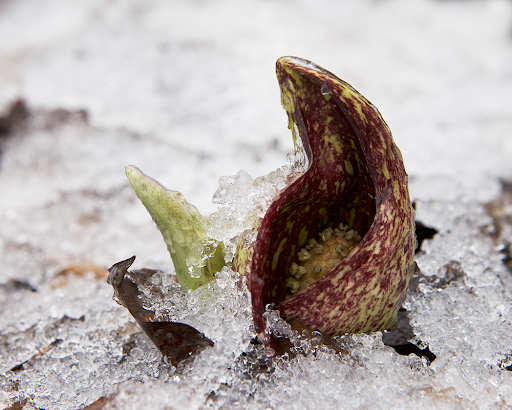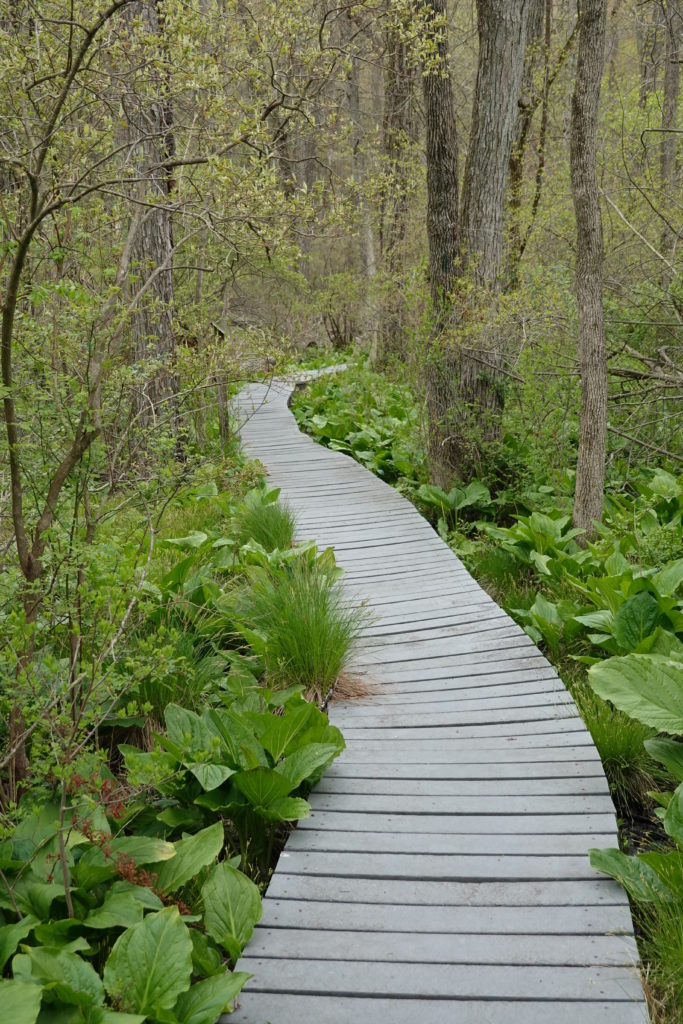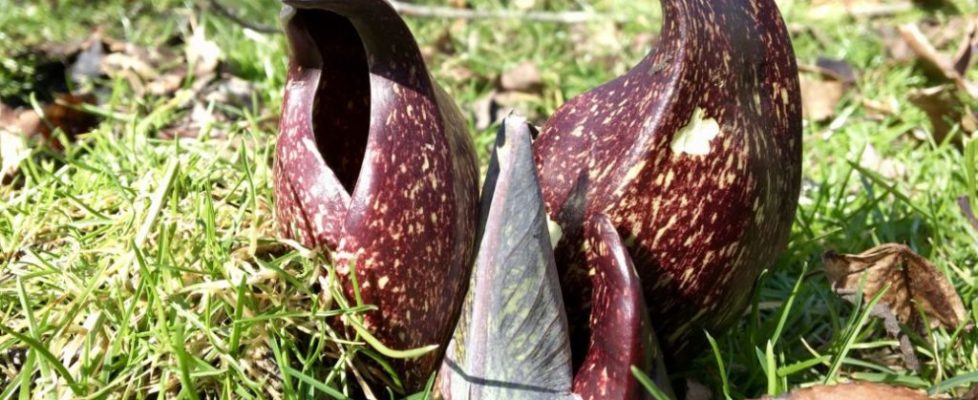Secrets of an Early Riser
Anyone who’s ever spent time walking through Northeastern wetlands in late winter is familiar with skunk cabbage (Symplocarpus foetidus), one of the earliest flowering plants to appear each year. To this lover of spring, its appearance feels like a joyous harbinger of the glories to come.
Even so, I’ve never paid much attention to the plant itself. It wasn’t until I took a walk recently among the swamps, streams, and wet forests of Pruyn Sanctuary and spotted the purple-and-white foliage emerging through patches of snow and ice that a simple question occurred to me for the first time.
How does the skunk cabbage do it?
Or, more specifically: What enables it to be first, growing so luxuriantly when most plants have barely begun to produce their first buds? The answer—as so often with the natural world when we look at it closely—is fascinating, even astonishing.
Symplocarpus foetidus, it turns out, doesn’t emerge earlier than most other wildflowers because of extra-tough leaves, some kind of antifreeze in its veins, or sheer force of will. It erupts through the snow and ice because, unlike any other plant in our region, it carries its own heating system. It actually functions like (for want of a better term) a warm-blooded plant during those cold late-winter days.

Source: www.twbwf.org
The skunk cabbage generates heat through the process known as thermogenesis, which in fact closely resembles the process used by mammals and other warm-blooded creatures. The process begins with starches the plant has stored in its roots and rhizome (the part of the stem that lies underground), all in preparation for the slightly less cold days of late winter.
Often weeks before most other plants are active, the starches begin to break down, a process that produces a significant amount of energy—i.e., heat. It then exudes the heat through its pores (called stomata) in a process called cellular respiration.
Scientists have found that, over the short term (usually a week or two), a skunk-cabbage plant can warm itself and the earth around it dozens of degrees above the temperature of the surrounding air. In addition, this little engine warms the nearby soil, making it more hospitable to the plant’s growth.
In researching this piece, I discovered that the skunk cabbage wasn’t through surprising me. I’d always assumed that the glossy, mottled purple-and-white shoots that emerge first are leaves. They’re actually leaf-like structures called spathes, which enclose spike-like stems called spadices. (Singular: spadix.) The plant’s abundant clusters of yellowish flowers grow on its spadix, and the leaves—a less glossy green—appear later.

As so often, the answers to some questions about the world around us only lead to more. For example: Given that the skunk cabbage’s flowers are pollinated by insects, are there enough bugs around in late winter to do the job?
There are, in fact, insects that hatch out at the same time that the cabbage blooms, including its pollinators, flies, stoneflies, and bees. By sending out its flower spike so early, the skunk cabbage is functioning as a classic “early bird.”
The plant’s skunkish odor—most noticeable up close—may also help the plant attract its pollinators, many of which typically feast on carrion and rotting vegetation along with nectar. Even in a season where there may be few insects about, the cabbage makes its presence known to the ones that have hatched.
Even the skunk cabbage’s temporary “warm-bloodedness” plays a part in its ability to thrive under challenging conditions. As well as giving the plant a jumpstart on spring, its self-generated heat may help its insect-attracting odor spread more widely through the air. And once the pollinators approach, the greater warmth within the spathe tempts them inside, where the flowers—and pollen—are.
My walk in Pruyn Sanctuary inspired me to learn about this unique native plant. Even so, for me the best thing about seeing its early leaves—I mean spathes—emerging from the winter earth hasn’t changed at all. To me, the early emergence of skunk cabbage will always mean one thing: Spring is coming. Copyright © 2020 by Joseph Wallace



